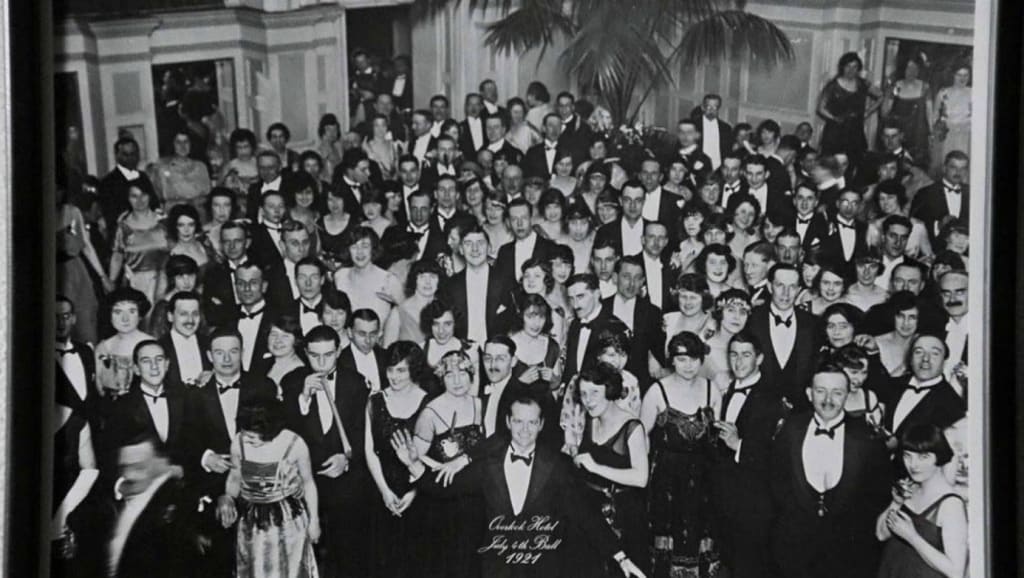Echoes of the Overlook: Why ‘The Shining’ Still Endures
Four decades later, Kubrick’s horror classic continues to inspire reverie

They say a film can take a toll on an actor, but perhaps nowhere is that more evident than in the anguished screams of Wendy Torrance in Stanley Kubrick’s The Shining. Played by Shelley Duvall, her role pushed her to psychological lows that can be viscerally felt by the viewer. Both Jack Nicholson and Danny Lloyd, too, carry the film with their unsettling performances. The entire cast and ambiance of the film impart a palpable weight.
Before a word is ever spoken, there’s a gravity to the environment that immediately separates the film as something unmistakable. The eerie, drawn out soundtrack as Jack’s car winds up the desolate mountainside puts in an argument for the sort of atmospheric introductions films of recent years have all but done away with. What the duo of composers Wendy Carlos and Rachel Elkind accomplished in just the opening sequence offers a nearly unparalleled showcase in how to unnerve an audience right out of the gate.
One of The Shining’s staple features, though, is its silence. The reliance on diegetic noise and Foley art sells the hotel in all of its haunting, high-ceilinged vastness. The long stretches of silence and dialogue-only sequences not only serve to disquiet the viewer, but they effectively punctuate the moments when the score resumes its heavy lifting.
Horror is a genre that is pushed especially far by special effects. Like action movies that lean a little too heavily on CGI, there’s rarely a horror film released today without an overbearing incursion of computer-generated jump scares. Sometimes, revisiting the horror films of prior generations can test the sensibilities of younger viewers — the first time I saw Psycho, it was difficult for me to take it seriously.
Though The Shining still isn’t yet what some would consider retro, there are areas in which the movie shows its age. But its muted visual fidelity is a feature that actually works in its favor. The washed out colors capitalize on the stark environment. There’s a powerful authenticity to it that feels characteristic of the home videos of my childhood.
The 4K clarity and high dynamic range that would define the film’s often-forgotten 2019 sequel, Doctor Sleep, are absent in The Shining, yet the final product is all the better for it. The effects used to bring to life some of the film’s gorier scenes fall understandably short of what more modern movies have achieved, but for a film of 1980, they’ve endured remarkably well.
Likely no feature of The Shining is more famous than its set. The hotel is the epitome of sinister. From the blood spilling out from the elevator, to the ghost twins that guard the building’s halls, to the terrors of room 237, it’s a film that’s rightly credited with some of the most famous moments of 20th century cinema. Before “Here’s Johnny!” was even uttered, it was all but guaranteed The Shining would go down as one of the great horror films of a generation. The scene with the baseball bat on the stairs, the guttural “Redrum” repetitions, the chase through the snow-covered maze, and the “All work and no play makes Jack a dull boy” scenes are only a few among the crowning moments that have made this a stand out film.
There’s a spectral sort of warmth to the scenes between Jack and the bartender that I always found oddly enchanting. The Gold Room is lit up in a wistful, nostalgic glow. It’s a cavernous echo chamber that’s as alive as fire. Lights are spread throughout the room, and motionless candelabras line the walls. The exchange between the two is uncannily cordial. As Jack gradually loses his mind and more of the hotel’s sordid characters come to life, the exchanges between them begin to take on a measured malevolence.
It grows clearer that from the moment the family set foot in the hotel, their outcome was fated. As Jack’s murderous rampage begins, he exudes an unmistakable madness. From the vacant stares out of frost covered windows, to his intensifying delusions, to the erratic ticks and lurches that begin coloring his movements, Jack Nicholson exhibits a masterfully disconcerting range of emotion. Danny Lloyd musters one of the most memorable performances delivered by a child actor. He’s sensitive, subdued and enigmatic, disturbing, and unpredictable.
Shelley Duvall’s performance is one of legend. Though accounts vary, some claim Kubrick traumatized Duvall on set. He berated her and encouraged the aloneness that vivified her time on screen. He demanded the film’s most harrowing scenes be reshot ad nauseum. The famous scene where Jack pursues her up the stairs took a 127 separate takes, which is a world record.
The result is one of the most gut-wrenching performances ever delivered by an actress. According to many, the real life horrors she suffered in filming the movie continue to control her. She was the martyr it took to insure this horror would continue evoking such reverence nearly half a century after its release.
One of the most timeless moments in The Shining is the still frame that ends the film. There’s no point in the movie that remains a greater source of speculation among fans. But the pointed ambiguity is what makes the moment so iconic. The slow pan in to the faded old photograph, Jack placed perennially at the center with his toothy, unflinching smile, stands for me as the perfect horror conclusion. It’s a mystery that lends itself to a multitude of interpretations, and all of them are cryptic and otherworldly. The “Here’s Johnny” moment has an unforgettably chilling charm, but for me, it’s that unmoving old portrait I’ll always see when I envision The Shining.
About the Creator
Ben Ulansey
Ben is a word enthusiast who writes about everything from politics, religion, film, AI and videogames to dreams, drones, drugs, dogs, memoirs, and terrorizing Floridians with dinosaur costumes.






Comments
There are no comments for this story
Be the first to respond and start the conversation.